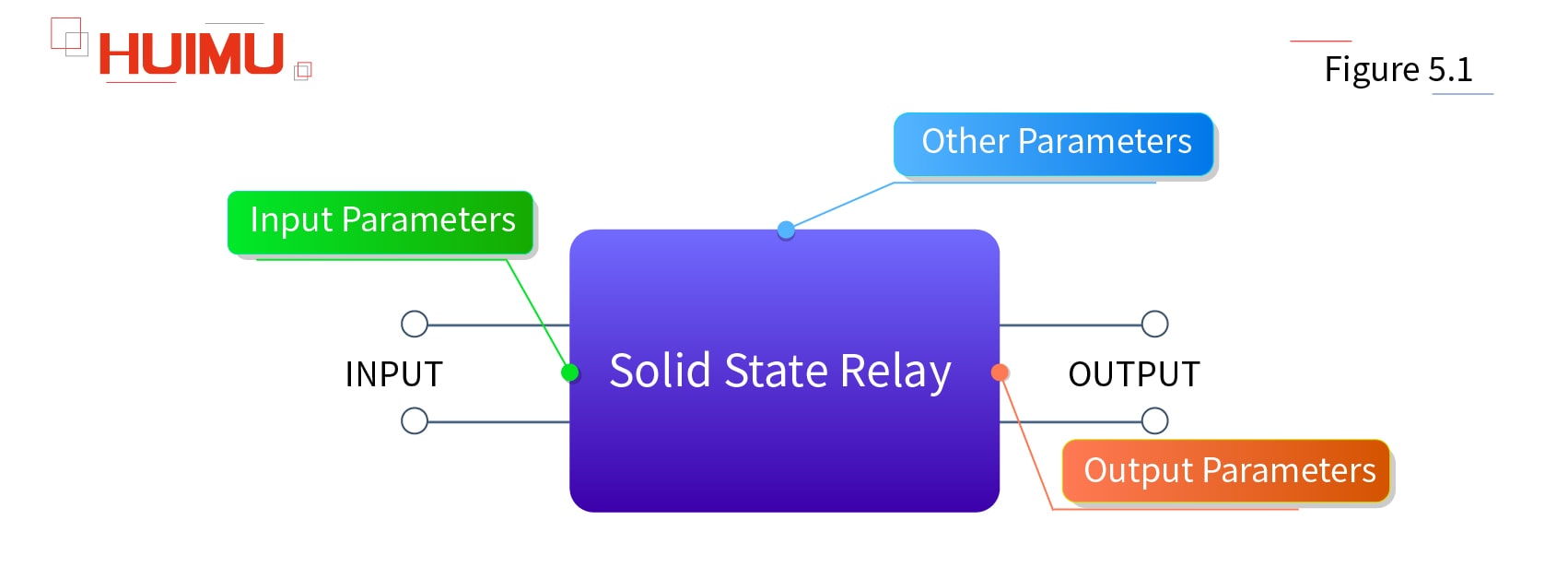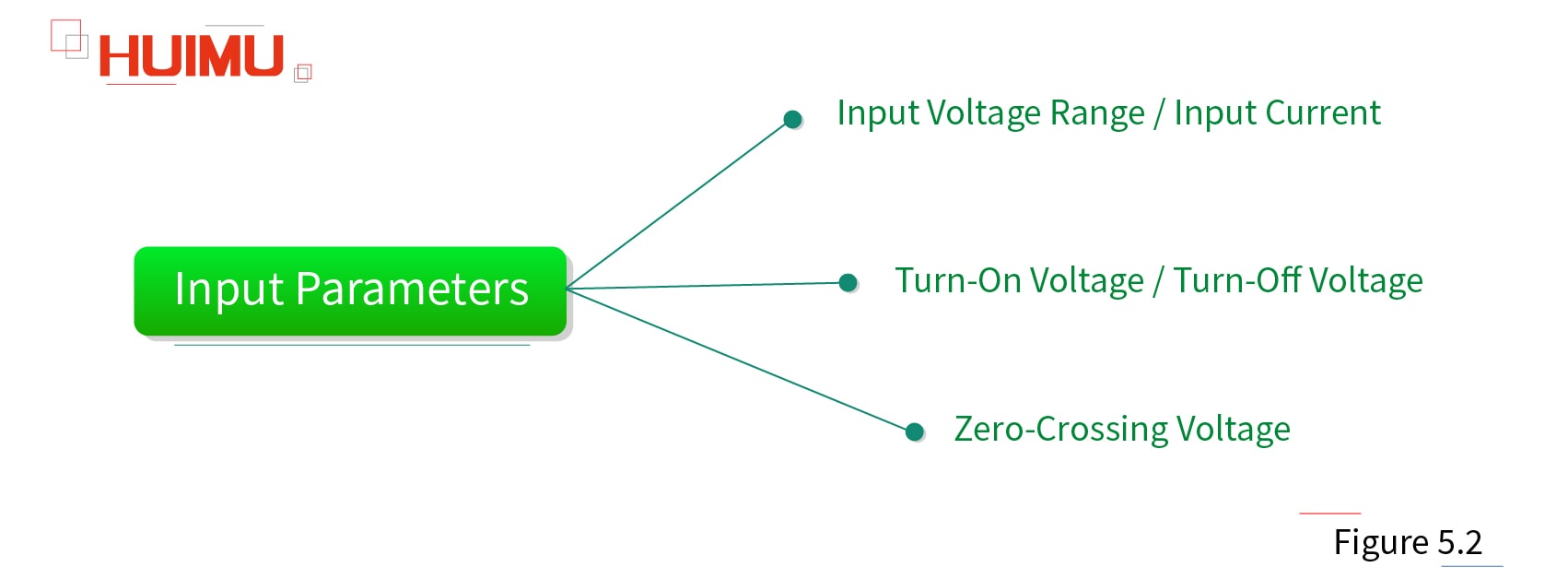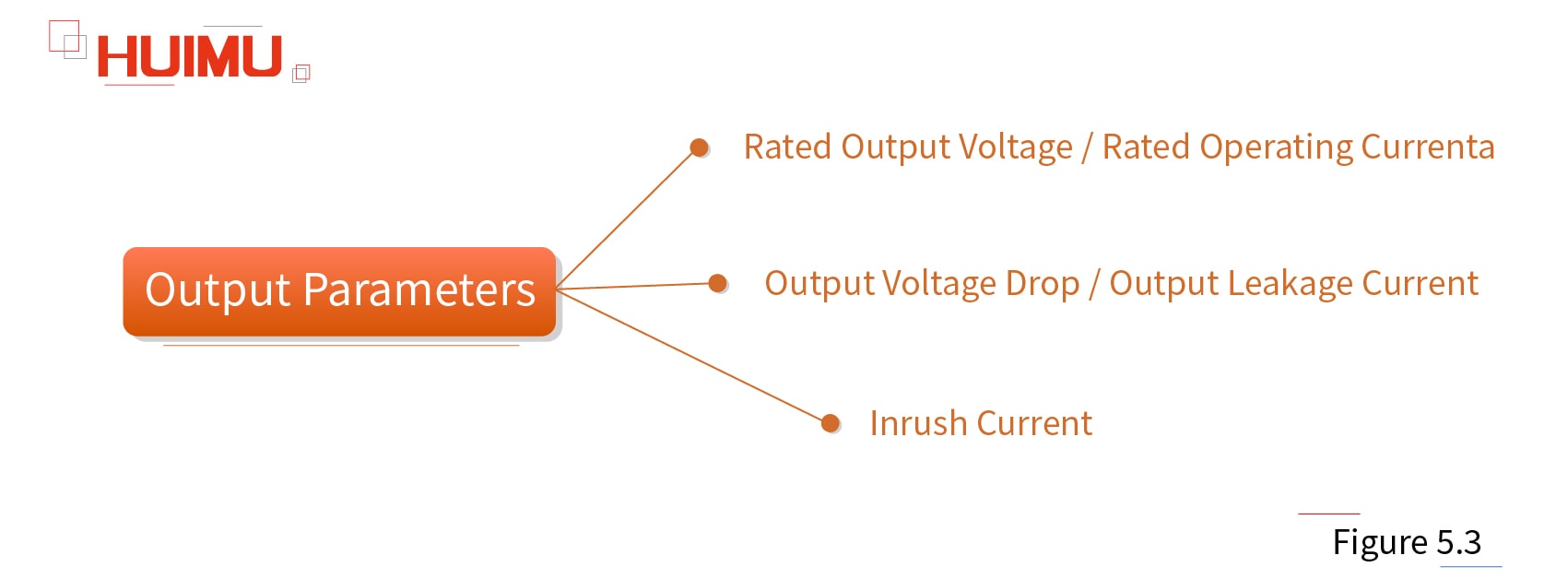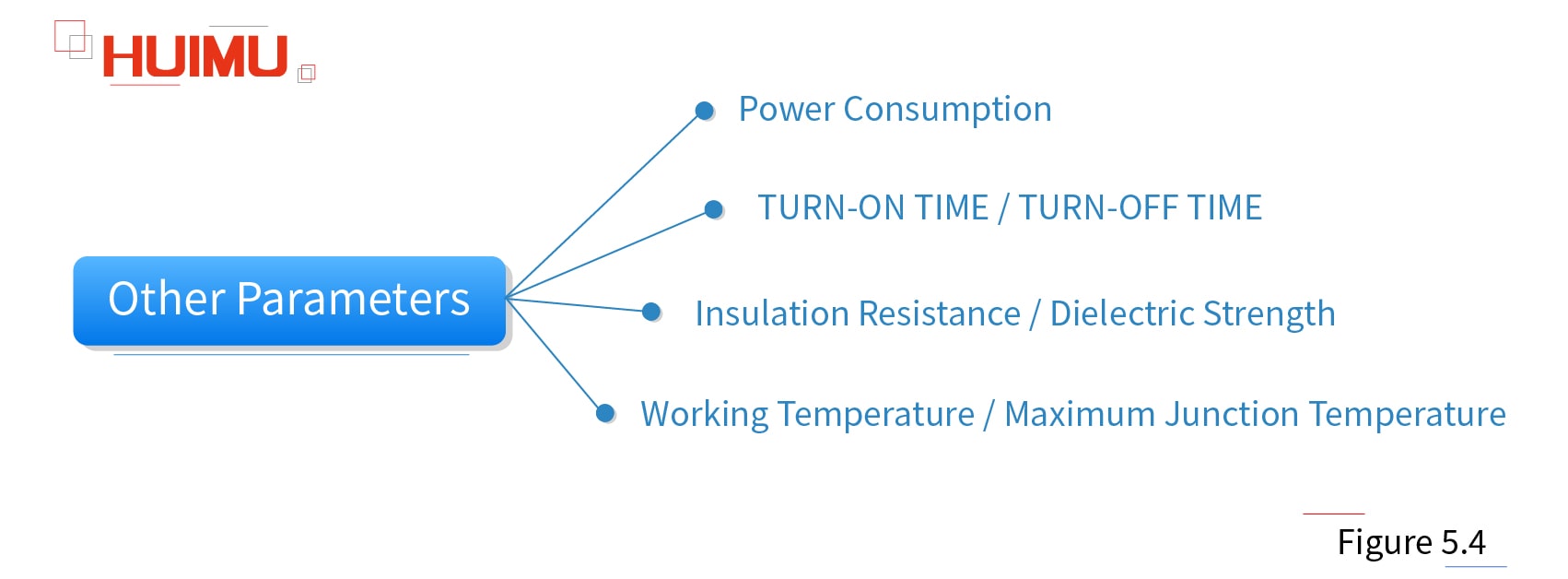§5. What are the Basic Parameters of Solid State Relays

The basic parameters of solid-state relays fall into three categories: Input Parameters, Output Parameters and Other Parameters.
Input Parameters:

Input Voltage Range / Input Current:
1) The input voltage range refers to the voltage range value that must be input (i.e. minimum) or allowable input (i.e. maximum) for the solid-state relay to operate normally when ambient temperature is at 25 °C.
2) Input current refers to the corresponding input current value at a specific input voltage.
Turn-On Voltage / Turn-Off Voltage:
1) The turn-on voltage (switch-on voltage). When the input voltage (the voltage applied to the input terminal) is greater than or equal to the turn-on voltage, the output terminal will be turned on.
2) Turn-Off Voltage (switch-off voltage). When the input voltage (the voltage applied to the input terminal) is less than or equal to the shutdown voltage, the output terminal will be turned off.
Zero-Crossing Voltage:
Strictly speaking, the zero-crossing voltage is not a voltage point but a voltage range that determined by the internal components of the zero-crossing relay, which is typically very low and almost negligible. If the power supply voltage is below the zero-crossing voltage, the zero crossing relay will not be turned on; and if the voltage is beyond the zero-crossing voltage, the zero crossing relay will be in the on-state.
Output Parameters:

Rated Output Voltage / Rated Operating Current:
1) The rated output voltage is the highest load operating voltage that the output terminals can withstand.
2) The rated operating current is the maximum steady-state operating current that can pass through the output terminals at an ambient temperature of 25 °C.
Output Voltage Drop / Output Leakage Current:
1) The output voltage drop is the measured output voltage at the rated operating current when the solid-state relay is in the on state.
2) The output leakage current refers to the measured current value that flowing through the load, under the condition that the solid-state relay is in the off state and the rated output voltage is applied to the output terminal.
This parameter is an indicator of the quality and performance of solid-state relays. The smaller the output voltage drop and the output leakage current, the better the solid-state relay.
Inrush Current:
Inrush current, also known as overload current, input surge current, or switch-on surge current, refers to the non-repetitive maximum (or overload) current value that the device will not be permanent damage and the output terminals can withstand, when the solid-state relay is in the on-state. The inrush current of the AC SSR is 5~10 times (in one cycle) of the rated operating current, and the DC SSR is 1.5~5 times (in one second) of the rated operating current.
Other Parameters:

Power Consumption:
Power Consumption, refers to the maximum power value consumed by the solid-state relay itself in the power-on state and the power-off state.
Switching-on Time / Switching-off Time:
1) The switching-on time (or turning-on time) is the time it takes for a normally open solid state relay to start from being applied the input control voltage until the output terminal begins to switch on and the output voltage reaches 90% of the final variation.
2) The switching-off time (or turning-off time) is the time it takes for a normally open solid state relay to start from being cut off the input control voltage until the output terminal begins to switch off and the output voltage reaches 90% of the final variation.
This is also an important parameter to judge the performance of solid-state relays. The shorter the turn-on time and the turn-off time, the better the switching performance of the solid-state relay.
Insulation Resistance / Dielectric Strength:
1) Insulation resistance refers to the measured resistance value between the input terminal and the output terminal of the solid-state relay when a certain DC voltage (for example, 550V) is applied. It can also include the measured resistance value between the input terminal and the outer casing (including the heat sink), and the measured resistance value between the output terminal and the housing.
2) Dielectric Strength, or dielectric withstand voltage, refers to the maximum voltage value that can be tolerated between the input terminal and the output terminal of the solid-state relay. It can also include the maximum voltage that can be tolerated between the output terminal and the housing, and the maximum voltage that can be tolerated between the input terminal and the outer casing.
Operating temperature / Maximum Junction Temperature:
1) Operating temperature refers to the normal working environment temperature range allowed when the solid-state relay installs the heat sink according to the specification, or when the heat sink is not installed.
2) Junction temperature, short for transistor junction temperature, is the actual operating temperature of a semiconductor in an electronic device. In operation, it is usually higher than the case temperature and the external temperature of the component. The maximum junction temperature is the highest junction temperature allowed by the output switching component.
